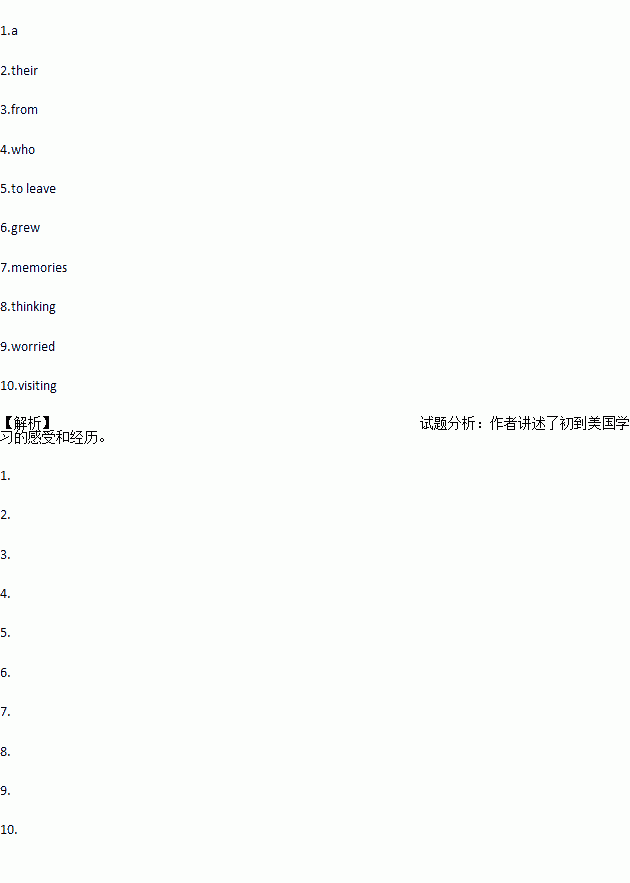题目内容
When I left for the United States to study. I had butterflies in my stomach. I was nervous because I was going to1.new place with new people and new customs. I couldn’t even understand2.(they)language. Everything was different3.my own country. There was nobody that I could talk to. I just had my husband,4.was a new person for me, too.
It was a sad moment when I had to say goodbye to my family and friends. I didn’t want5.(leave)my hometown because I 6.(grow) up there and had wonderful7.(memory) of the place. So,8. (think)about all these changes made me nervous and I was9.(worry)about my new life. But studying abroad was a decision that I made myself. I had to continue and accept the challenge. I looked forward to 10.(visit)my family in the summer vacation.
 优百分课时互动系列答案
优百分课时互动系列答案

